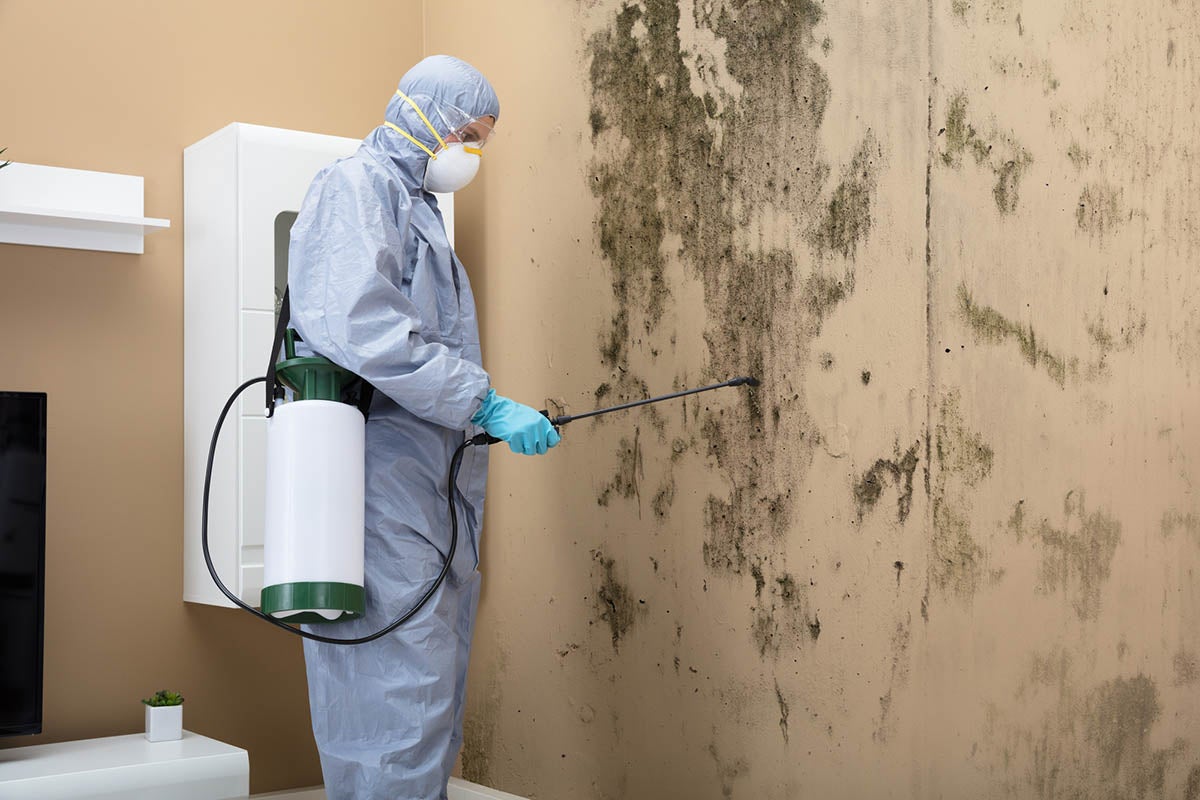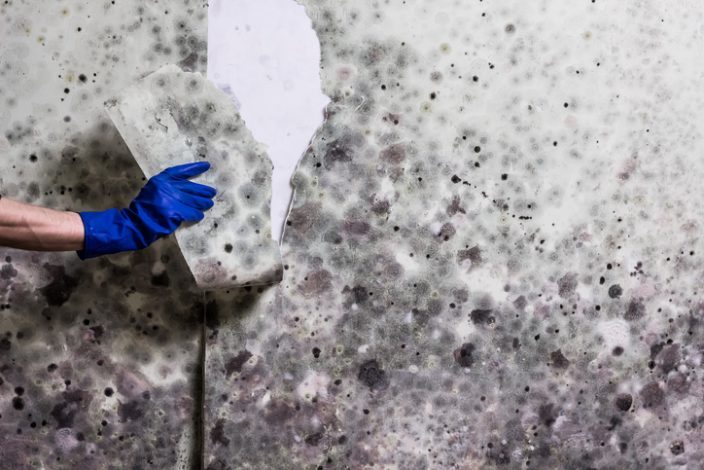Effective Post Mold Remediation Cleaning Protocols
Effective Post Mold Remediation Cleaning Protocols
Blog Article
Key Tips for Effective Article Mold Removal
Addressing mold concerns in a timely and effective manner is crucial for preserving a healthy interior environment. Effectively completing mold and mildew remediation is a multifaceted process that needs focus to information and adherence to particular methods. From checking treated locations to applying dampness control measures, each action plays an essential function in making certain the efficiency of the removal process. Nonetheless, there are vital post-remediation steps that are equally important but commonly forgotten. These actions not only validate the success of the removal initiatives yet also add to protecting against future mold and mildew development.
Inspection of Treated Areas
Upon conclusion of the mold and mildew removal procedure, a comprehensive inspection of the dealt with locations is essential to make certain the efficiency of the removal efforts. This examination functions as a crucial step in the post-remediation stage to validate that the mold elimination and cleaning procedures achieved success in eliminating the mold and mildew invasion and recovering a risk-free interior environment. The assessment should be performed by certified specialists that have the expertise to analyze the remediated areas diligently.
Throughout the assessment, numerous factors are reviewed to establish the success of the remediation procedure. These include aesthetic assessments to check for any kind of signs of mold growth or water damage, dampness degrees to validate that the area is complimentary and dry of excess humidity that might advertise mold and mildew re-growth, and air quality testing to guarantee that the interior air is risk-free to breathe. Furthermore, the assessment may involve making use of specialized tools such as wetness meters and thermal imaging video cameras to discover concealed mold and mildew or moisture pockets that might bring about future mold and mildew problems if left unattended. In general, a thorough assessment of the dealt with areas is important to verify the effectiveness of the mold and mildew removal efforts and supply assurance to the passengers of the property.

Dampness Control Steps
Reliable wetness control measures are crucial for protecting against mold growth and maintaining a healthy and balanced indoor setting. To accomplish this, it is essential to resolve sources of dampness within the building. Appropriate air flow is vital to managing moisture degrees. Mounting exhaust followers in bathrooms and kitchen areas can aid eliminate excess moisture. Furthermore, utilizing dehumidifiers in damp areas can help in reducing humidity levels, making it harder for mold and mildew to prosper.
Routinely preserving the building and inspecting's outside can likewise stop dampness invasion. After mold remediation. Guaranteeing that gutters are clear, downspouts direct water far from the structure, and the roof is in great problem can aid prevent water from leaking into the structure. Correctly sealing home windows and doors can also assist maintain dampness out
Any type of leakages or spills need to be cleaned and dried out within 24-48 hours to prevent mold growth. By applying these wetness control steps, the danger of mold repeating can be substantially reduced, creating a healthier interior setting.
Correct Air Flow Analysis
An integral element of making sure a healthy interior setting article mold removal is carrying out a comprehensive analysis of the air flow system. Appropriate air flow evaluation plays an important role in stopping future mold development and maintaining air high quality within the afflicted area.
In addition, evaluating the air flow system consists of taking a look at the distribution of air throughout the location to identify any type of locations of inadequate flow where wetness and impurities could accumulate. Proper ventilation not only helps in controlling humidity degrees yet additionally help in eliminating airborne mold and mildew spores and various other toxins, thereby improving total indoor air top quality. By resolving any kind of ventilation problems publish mold and mildew removal, homeowner can produce a much healthier and much more comfortable atmosphere for passengers while lowering the danger of mold and mildew re-infestation.
Cleaning and Disinfection Protocols
To make sure extensive mold remediation, thorough adherence to details cleaning and sanitation procedures is crucial. Cleaning up and disinfection methods play an essential duty in the post-mold removal stage to prevent the reappearance of mold growth and ensure a risk-free and healthy atmosphere.
In addition, implementing preventive steps such as using mold and mildew inhibitors and keeping correct ventilation can aid minimize the threat of future mold and mildew infestations. By following strict cleansing and sanitation procedures, property proprietors can guarantee the successful eradication of mold and mildew and create a healthy interior atmosphere for occupants.
Surveillance and Upkeep Plan
Implementing a normal tracking and maintenance strategy is view crucial for making certain the long-lasting effectiveness of mold and mildew remediation initiatives. As soon as mold removal is completed, it is critical to develop a monitoring routine to review the success of the removal procedure. This includes consistently examining the formerly affected locations for any type of indicators of mold reoccurrence or water damages. By conducting regular checks, any type of brand-new mold development can be without delay recognized and attended to, avoiding a reoccurrence of the initial problem.
Additionally, creating an upkeep plan is key to avoid future mold issues. This plan might consist of activities such as fixing plumbing leaks, boosting ventilation, and managing indoor humidity degrees. Routine upkeep not only aids in preventing mold and mildew however additionally contributes to keeping a healthy and balanced indoor setting. It is suggested to document all tracking and maintenance tasks to track progression and guarantee consistency in the upkeep of the remediated locations. By carrying out a thorough tracking and maintenance plan, the risk of mold and mildew re-emergence can be substantially decreased, advertising a clean and safe living or functioning atmosphere.
Final Thought
Finally, successful article mold and mildew removal entails comprehensive examination of dealt with locations, implementation of moisture control steps, assessment of proper air flow, adherence to cleaning and sanitation protocols, and establishment of a monitoring and maintenance strategy. These essential actions are necessary to guarantee that mold growth is successfully removed and prevented from other persisting in the future. By complying with these guidelines, homeowner can maintain a healthy and balanced and risk-free setting for owners.
Upon completion of the mold and mildew removal process, a complete assessment of the treated locations is vital to make certain the effectiveness of the removal efforts. These include visual analyses to inspect for any type of signs of mold and mildew growth or water damage, moisture levels to validate that the area is free and dry of excess moisture that might advertise mold re-growth, and air top quality screening to guarantee that the interior air is risk-free to breathe. In addition, the inspection might entail utilizing specialized tools such as wetness meters and thermal imaging cams to discover hidden mold and mildew or moisture pockets that can lead to future mold and mildew issues if left unchecked. By resolving any type of air flow problems post mold and mildew removal, property owners can produce a much healthier and a lot more comfy environment for passengers while reducing the these details risk of mold re-infestation.

Report this page